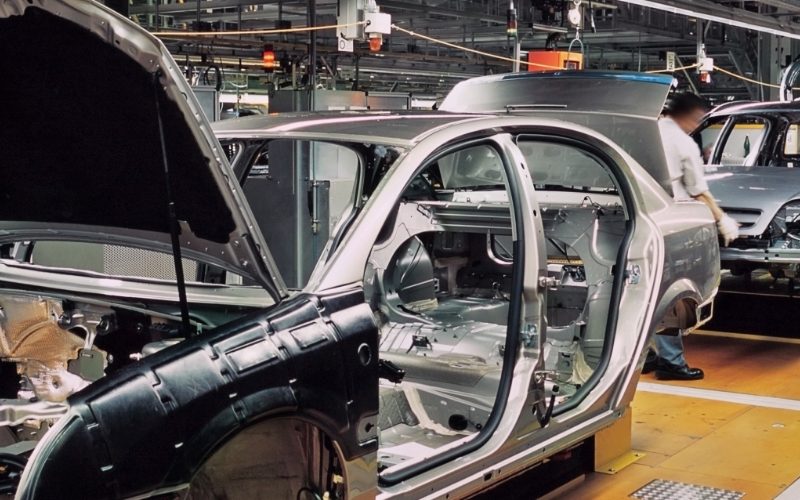by Joseph V. Amato, President and Chief Investment Officer—Equities, Neuberger Berman
While there’s been ample focus on the recent upward move in interest rates, economic resilience and second-quarter earnings, one issue that may be getting short shrift from investors is the potential impact of a U.S. auto strike.
This past week, United Auto Workers (UAW) members voted to authorize their leaders to call a strike against the “Big 3” automakers: Ford, General Motors and Stellantis (owner of the Chrysler and Jeep brands). Such a combined move would be unprecedented (actions have typically been against one of the three), but so are the demands coming from the union, which is calling for double-digit wage increases and myriad changes to compensation and benefits, which are causing the companies to balk.
Unions in the Driver’s Seat
This has already been a year of elevated labor activity. From January through July, there were 214 strikes in the U.S. involving 325,000 workers, compared to 130 strikes and 28,000 workers and 223 strikes and 76,000 workers in the same period of 2021 and 2022, respectively, according to the Cornell-ILR Labor Action Tracker. The last auto strike occurred in 2019, lasted six weeks and targeted GM. Even where there have not been strikes, we’ve seen companies provide significant concessions to workers.
Last week, UPS workers ratified a new contract providing cumulative wage increases of roughly 22% over the next several years, and American Airlines pilots have received an immediate 21% increase in compensation or about 45% over the next four years, which follows similar agreements at other air carriers. Back in December, President Biden forced rail workers to accept a contract without paid sick days, but that agreement still carried pay hikes of around 24% over the life of the contract.
What’s behind these trends? Most obvious is a lack of available labor, with open positions hovering at about 10 million in the U.S. despite an unemployment rate of just 3.5%—a mismatch that has increased union power. High inflation has also been key, as the cost of gas, groceries, cars and other necessities has motivated workers. In addition, the large profits at many companies in recent years have reinforced claims that business owners have benefited at the expense of workers. The Big 3, for example, increased their operating profits (before interest and taxes) from $18.6 billion in 2019 to $47.3 billion over the last 12 months.
For managers, fear around supply chains is also apparent. During COVID and many months afterward, it was hard to deliver products on a timely basis, with disruptions often causing damage to brands and market share. With conditions returning to normal, companies are reluctant to rock the boat, preferring large wage concessions to business interruptions. Given broadly high (if diminishing) inflation trends, they may feel they have cover to pass along those costs to consumers.
And Now Come Autos
The looming auto strike may signal how far the pendulum has swung toward workers. With the existing contract set to expire on September 14, the parties seem far apart.
UAW demands include a 46% wage increase over four years, converting temporary and supplemental workers to full time, and restoring cost-of-living adjustments. All-in labor costs per worker would rise from $65 per hour to more than $100. At Tesla, that cost is roughly $45 per hour, and at the Japanese automakers, the cost is $55 per hour. Certain demands could be challenging for the companies, such as a four-day work week, the reestablishment of a defined benefit pension plan and the creation of a “working family protection” program that would require companies to pay laid-off workers to do community service work.
Given their relatively strong balance sheets and earnings, the automakers can probably absorb wage increases. However, they fear that the broader changes could undermine their ability to compete against non-union and global competitors at a time when they are accelerating their transition to electric vehicles. The latter increases the stakes for the union as well, as manufacturing battery-powered cars takes fewer workers (we estimate 30% less) than for traditional cars and trucks.
Tactically, current negotiations have a different look from the past. Rather than keeping talks private, UAW President Shawn Fain has taken to posting updates on social media. More importantly, the union has signaled a potential strike against all three car makers, rather than targeting just one—heightening potential fallout for the companies, but also creating additional risk of depleting union emergency funds. The UAW currently has a strike fund of $825 million, which could last 11 weeks or so if all three automakers are targeted.
Broader Impacts
Although only about 10% of U.S. workers are unionized, the outcome of negotiations in Detroit and elsewhere could create knock-on effects for the broader economy, not only by causing disruption in the case of strikes, but contributing to higher cost structures and expectations in the event of outsized wage enhancements. The psychological impact could resonate in union halls, non-union breakrooms and corporate suites for some time to come.
In terms of corporate results, the path of wages will naturally affect profit margins, especially if companies find increased resistance to price hikes on the part of customers. At the macro level, elevated labor costs could make the Federal Reserve’s goal of a soft landing more difficult. If wage growth stays strong, that could leave the central bank with less wiggle room to limit further rate hikes designed to avoid the dreaded wage/price spiral.
Markets have tended to look through temporary work stoppages, since production eventually resumes and catches up, although sales lost to competitors not affected by strikes would not be recovered. The more important issue, in our view, is the impact of wage hikes on inflation. Inflation has been trending down since the peak in the summer of 2022, but anything that reverses that trend could have serious implications for rate policy and the potential for a soft landing. This fall, the automotive industry will be an important leading indicator for the future path of inflation.
In Case You Missed It
- U.S. Existing Home Sales: -2.2% to SAAR of 4.07 million units in July
- Japan Manufacturing Purchasing Managers’ Index (Preliminary): +0.1 to 49.7 in August
- Eurozone Consumer Confidence Indicator (Flash): -0.9 to -16.0 in August
- Eurozone Manufacturing Purchasing Managers’ Index (Preliminary): +1.0 to 43.7 in August
- U.S. New Home Sales: +4.4% to SAAR of 714,000 units in July
- U.S. Durable Goods Orders: -5.2% in July (excluding transportation, durable goods orders increased 0.5%)
- University of Michigan Consumer Sentiment (Final): -1.7 to 69.5; 1 year inflation expectations +0.2% to 3.5% in August.
What to Watch For
-
- Tuesday, August 29:
- S&P Case-Shiller Home Price Index
- U.S. Consumer Confidence
- Thursday, August 31:
- Eurozone Consumer Price Index
- U.S. Personal Income and Outlays
- U.S. Personal Consumption Expenditure
- Friday, September 1:
- U.S. Employment Report
- ISM Manufacturing Index
- Tuesday, August 29:
Investment Strategy Group
Copyright © Neuberger Berman















